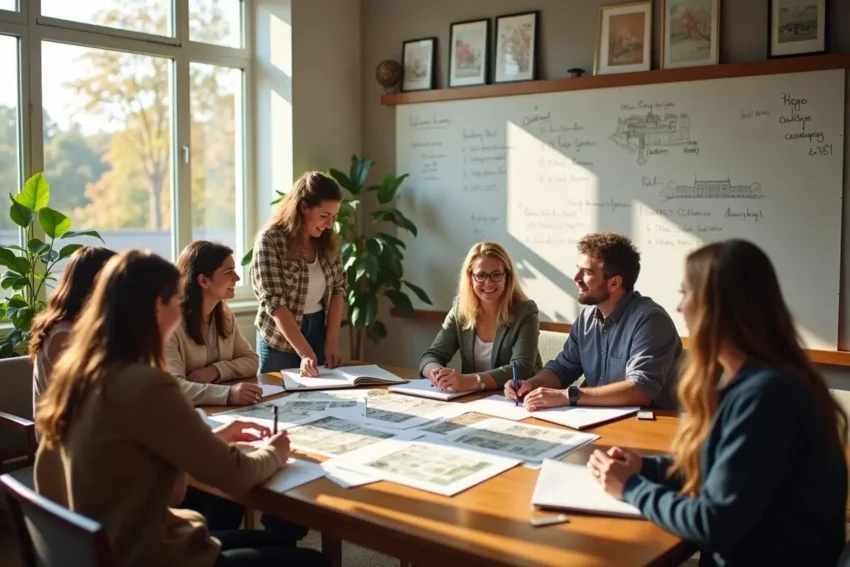How to Plan a School Reunion That People Actually Want to Attend

Reunions have a funny way of sneaking up on us. One minute, you’re flipping through your middle school photos and the next, you’re texting your old best friend about whether it’s time to finally plan that long-overdue get-together.
If the idea feels equal parts thrilling and overwhelming, that’s normal. Planning a school reunion isn’t just about food and decorations—it’s about recreating a moment in time while honoring how much everyone’s grown since then.
Contents
Finding The People Who Made It Matter
Before you start picking dates or venues, you need to find your people. The internet makes this infinitely easier now. A simple scroll through social media can unearth half your graduating class, but don’t stop there. Try using a free online middle school yearbook search to track down classmates who might not be on Facebook or Instagram. Those old pages are like buried treasure, bringing back names and faces that might’ve faded with time.
Once you’ve reconnected, start a group chat or email thread. Keep it light, casual, and upbeat. No one wants to feel ambushed by a flurry of planning messages before they’ve even agreed to attend. The goal is to reignite that spark of familiarity, not overwhelm everyone with spreadsheets and deadlines.
Making The Invite Feel Personal
When it comes to invitations, skip the cold mass messages. Whether it’s a digital invite or a printed card, add a touch of warmth. Mention something specific—maybe an inside joke, a shared memory, or a nod to that unforgettable field trip disaster.
It helps people remember that this isn’t some corporate networking event. It’s a gathering of people who shared awkward photos, cafeteria pizza, and inside jokes you couldn’t explain to anyone else. The best reunions start with sincerity, not flash. A genuine tone goes further than any fancy font ever could.
Choosing The Right Setting
Picking a venue is trickier than it sounds. A stuffy banquet hall might impress on paper but feel too formal in person. The best settings are relaxed, familiar, and encourage mingling. Community centers, local breweries, or even outdoor spaces like parks and vineyards work beautifully if you want a laid-back vibe.
You don’t need a luxury budget to make the night memorable. You just need a place where people can talk comfortably and feel at ease. A touch of nostalgia—like hanging old class photos or playing songs from your graduation year—ties everything together without overdoing it.
Reconnecting And Rediscovering
Part of what makes reunions special isn’t just reminiscing—it’s rediscovering who everyone’s become. Use the planning phase as an excuse to catch up. Reaching out to old classmates can feel weird at first, but that’s where the magic starts.
Ask how they’ve been, not what they’ve achieved. You’ll be surprised how fast old rhythms return when there’s no competition in the air. This is also where thoughtful gestures come into play. Small, shared activities can spark conversation and laughter—like setting up a photo booth with throwback props or putting together a slideshow of old school photos alongside recent ones.
And if you’re brainstorming ways to reconnect beyond the event, consider creative gift ideas for friends who’ve reentered your life. Personalized photo albums, handwritten letters, or framed pictures from those long-forgotten yearbooks go a long way in making people feel seen and remembered.
Getting Everyone To Show Up
You can plan the most heartfelt reunion in history, but getting people to commit is often the hardest part. Life gets busy, and nostalgia doesn’t always compete well with packed calendars. Make attendance as easy as possible by providing clear details early: date, location, and RSVP instructions.
Offer to help coordinate carpools or hotel options if people are traveling from out of town. Keep communication friendly, brief, and consistent without overdoing reminders. The tone should feel like a friend inviting you to something fun, not a committee chair chasing attendance numbers. A little humor helps too. Everyone’s more likely to show up if it feels like an event worth laughing about later.
Capturing The Energy Without Overplanning
Overplanning can drain the spontaneity out of an event that thrives on it. Once you’ve locked down the essentials—venue, food, and music—leave space for organic moments. Have a playlist ready, but don’t schedule every second. People want time to drift into conversations, revisit old memories, and maybe dance to a song they forgot they loved.
If you have volunteers, assign them small roles so you can actually enjoy the reunion instead of micromanaging. The most memorable reunions feel effortless because the focus stays on connection, not logistics.
Keeping The Momentum Going
When the reunion ends, don’t let the energy fade away. Create a shared photo album where everyone can upload pictures. Keep the group chat alive, even if it’s just for birthday wishes or updates. The whole point of a reunion is to remind everyone that those bonds didn’t end when school did—they just went quiet for a while. Rebuilding them can feel grounding in a world that moves too fast.
A school reunion that people actually want to attend isn’t about perfection or nostalgia overload. It’s about bringing back that sense of belonging that once came so easily. The goal isn’t to relive the past, but to appreciate how those early connections still echo through who we are today. If you plan with heart, keep things simple, and approach it all with humor and warmth, you’ll end up with something far more lasting than a party—you’ll reignite a little piece of shared history that everyone forgot they missed.



